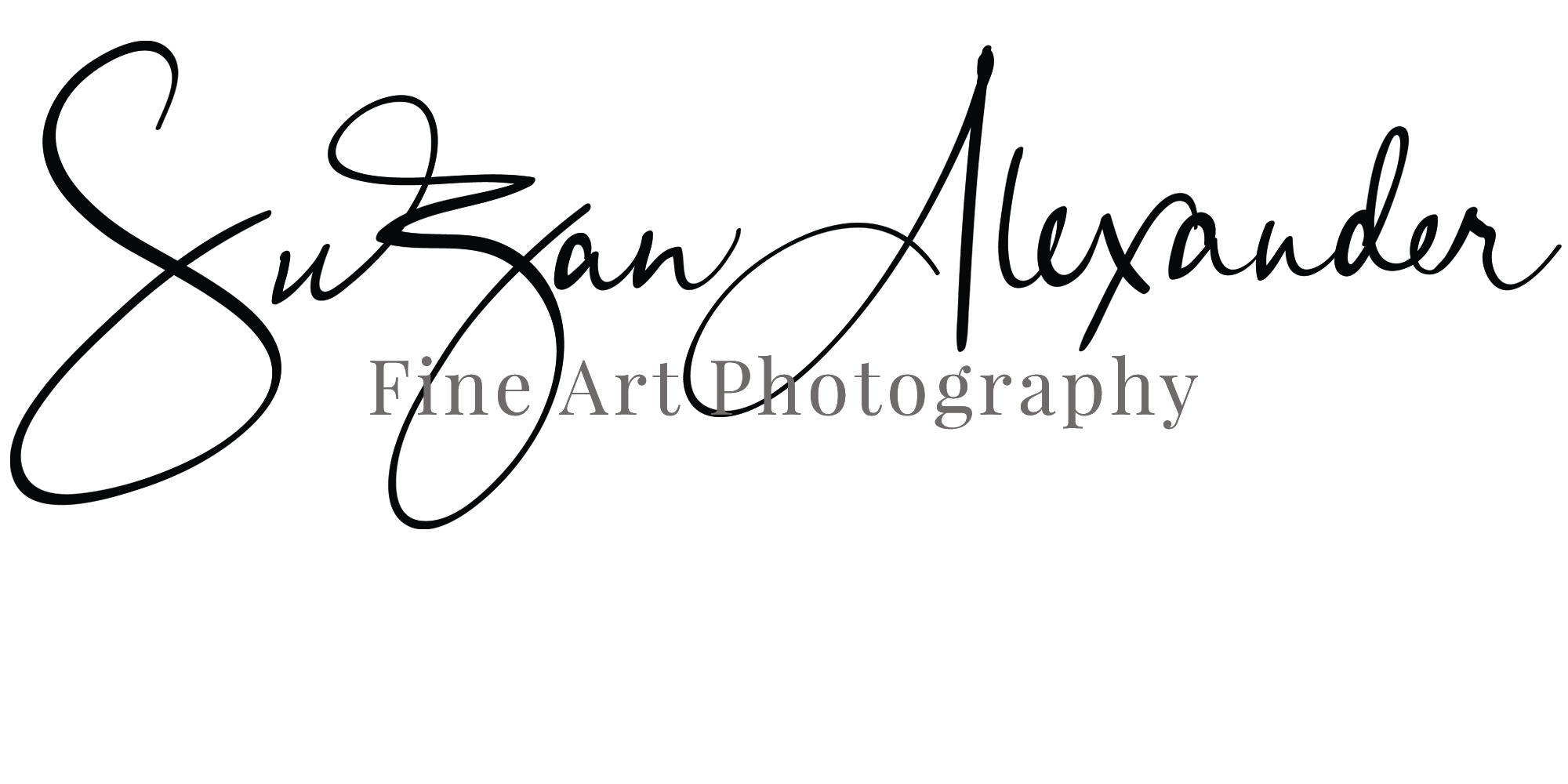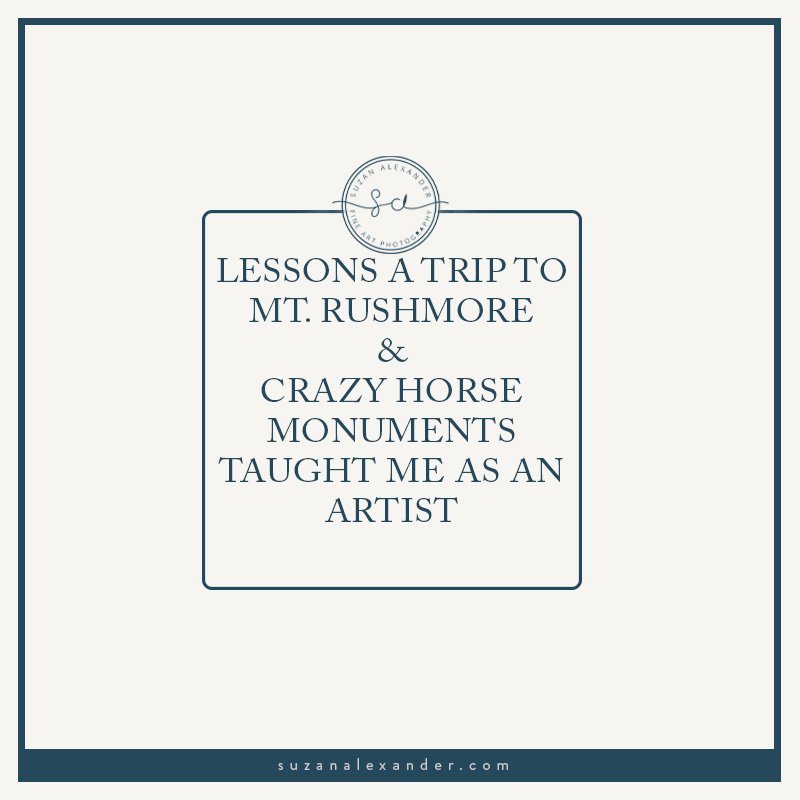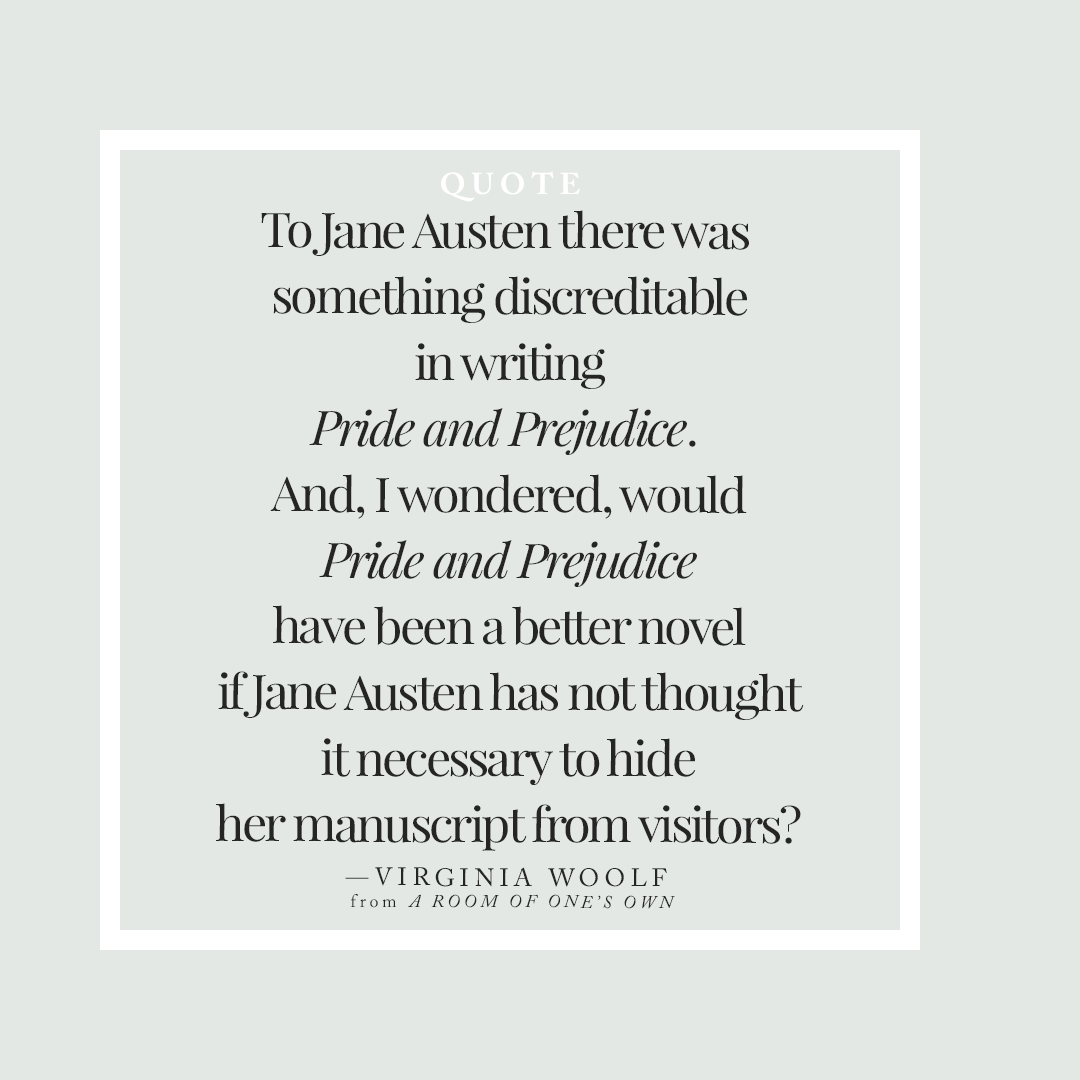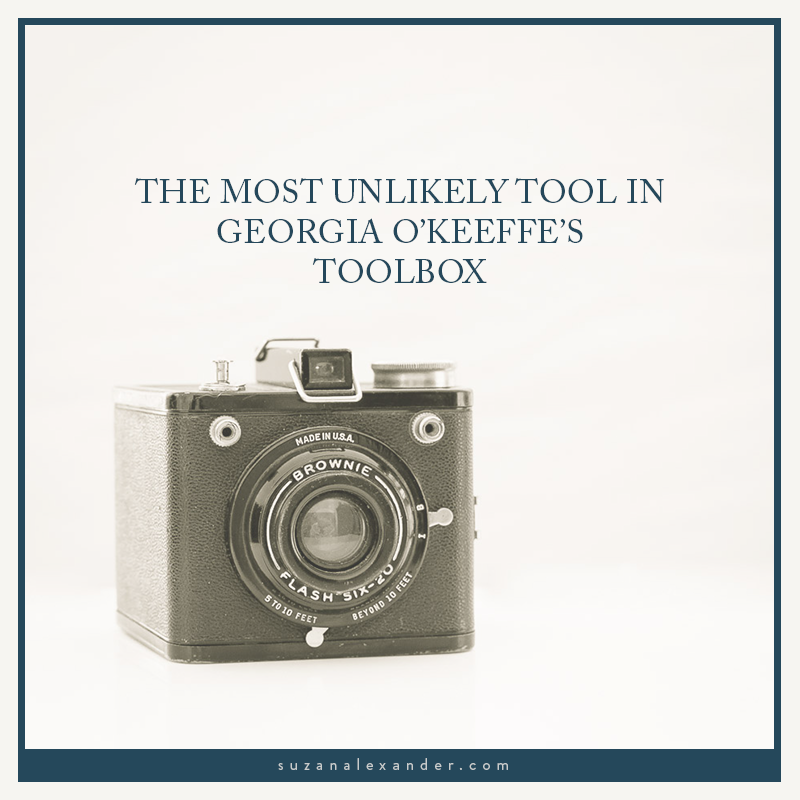LESSONS A TRIP TO MOUNT RUSHMORE AND CRAZY HORSE MONUMENTS TAUGHT ME AS AN ARTIST
In July 2023, I had the opportunity to visit the iconic Mount Rushmore National Memorial with a bonus tour of the Crazy Horse Memorial ®. What might be viewed as a somewhat “touristy” trip was so much more. Sure. There were history lessons and tchotchkes to be purchased, but the life lessons tucked in every nook and cranny of the trip are what I am still holding on to nearly a year later.
So, what did the trip teach me as an artist? Well, I’m so glad you asked. [wink-wink]. Grab your hard hat, hiking boots, safety goggles, and let’s talk about it because I think the application can be much broader than creativity. I realize that is a pretty big jackhammer to lift, but I think these Monuments are up to the task.
Three Lessons from Mt. Rushmore
The artist who was commissioned to carve Mount Rushmore was Gutzon Borglum. Borglum was a Danish-American sculptor who is credited with being the first American sculptor to have work purchased by the Metropolitan Museum of Art. It is noted that he wanted to create something with a national focus, something that would stand the test of time and something that would draw people from around the world. It is estimated that Mount Rushmore receives approximately 3 million visitors to the monument each year so I think that box is checked.
Unfortunately, Borglum died in 1941, just seven months shy of seeing the completion of his project.
Lesson 1: Don't compromise your vision: The importance of your "substrate" & don't settle for less
Gutzon Borglum was commissioned to carve the "Old West heroes". The location was a "spirelike granite" formation located in the Black Hills of South Dakota that had already been secured for the project before Borglum was tapped. When Borglum surveyed the location, he was reportedly underwhelmed with the "canvas" on which he was given to work.
Borglum selected another granite formation that he felt would be more suitable for carving and provide a higher level of longevity. This meant that the preferred location had to be acquired at some expense. While I don't know the details of the exchange, I would like to imagine that he already had the solution at the ready BEFORE he ever broached the subject of what he saw as a problematic substrate on which to work. Sure, he had a certain established cache having been credited with being the first American sculptor to have work purchased by the Metropolitan Museum of Art. That, my friends, is why he was the artist for the job. That is also why we can enjoy his work 80+ years later and counting.
As a side note, you might also have noticed that I mentioned that the commission was to carve "Old West heroes" NOT the four iconic Presidents. Yep. He even changed the focus of the subject matter entirely. I can't even imagine how that conversation went, or if it was addressed at the same time as the need for a new location. Whatever the circumstances, I have to admit, I'm not sure I would have been as willing to make the trip if Mount Rushmore wasn't, well... Mount Rushmore. But, subject matter aside, there is also the question as to whether there would even BE carvings to see if the original location was used had Borglum moved forward with a site that was less than adequate for his vision.
Application: Know your materials and tools. Know what they can and can't do. It goes hand-in-hand with being considered a trusted professional and delivering the highest quality work possible with your knowledge, skills, and abilities.
BONUS Application: Ask for what you need to make your vision happen.
Lesson 2: Don't compromise your vision: The importance of "studies"
Gutzon Borglum's model of Mt. Rushmore memorial--Washington, Jefferson, Roosevelt & Lincoln. Mount Rushmore National Memorial Sount Dakota South Dakota, ca. 1936. Photograph. https://www.loc.gov/item/91482996/.
Gutzon Borglum's studio (Sculptor's Studio) remains on the premises and houses a mock-up (or model) version of the sculpture of the four U.S. Presidents. According to the film in the Visitors Center, Borglum created something like nine (9) large-scale mock-ups (or "models") in the studio. And, when I say "large-scale", I mean they are 1/12 of the size of the Monument. Keep in mind that the sculpture's noses on the Monument are about 20 feet long, which means the model size would be around 1.66 feet long for just one nose. I included a photo of Borglum and one of the models for scale/reference of just how large these models were. I feel sure he didn't knock these out in a day.
While your first thought may be that Borglum was "practicing", you might be surprised to learn that he used these mock-ups to refine his design, as well as perfect the mathematics, measuring, plumb line placement, etc. These details were used by the workers as they blasted, jackhammered, and chiseled rock while suspended in the air.
Application: Persistence. This was astounding to me. Just one model would have taxed my creative acumen. Seriously. I can only think of one time (maybe two times) I have executed more than one study. After about two attempts. I filed the paintings away with a few notes scribbled on them. In other words, I gave up.
Right now I'm thinking I need to dust these paintings off, read my notes, and try another seven times.
What about you? Do you have a project that deserves another chance?
Lesson 3: Be Brave: Sometimes you have to dangle in the air without a safety harness
I already hinted at this in "Lesson 2", but for clarity's sake, the elevation of Mount Rushmore is 5,725 feet. The presidents' faces are around 60 feet high. To carve the faces with jackhammers, and drills, and even to carry the dynamite to the work area, the workers used Bosun's Chairs to suspend them above the ground.
A Bosun's Chair is described as a leather chair suspended in the air by a 3/8-inch-thick steel cable. The chairs were raised and lowered with a hand crank which was operated by fellow workers at the top of the mountain. Notice I did not mention a safety harness. To give you a better idea, there was a Bosun's Chairs on display in the Studio and, since a picture is worth a thousand words, I included a picture here. Amazingly, while there were some injuries, there were no deaths during the sculpting process.
“Everything you’ve ever wanted is on the other side of fear. ”
Application: Sometimes you have to do scary things. And, while I'm not suggesting you strap yourself into a Bosun's Chair, I am suggesting that SOMETIMES you need to do things while scared. Anything unfamiliar is uncomfortable and, by definition, scary, but what happens on the other side of scared? This reminds me of George Addair’s quote: “Everything you’ve ever wanted is on the other side of fear.”
Bonus Application: Sometimes we need to accept help from others to raise us, as well as lower us, to do our best work.
Three Lessons from Crazy Horse Monument
There is another great sculpture not far from Mount Rushmore. The rock sculpture is the Crazy Horse Memorial ® and is what I will be presumptuous enough to call a "labor of love". It doesn't garner the notoriety nor attract the volume of visitors as its famous neighbor, but it is, in my opinion, no less important.
In 1939, Chief Henry Standing Bear invited Korczak Ziolkowski to carve a memorial for the famous Lakota war leader, Crazy Horse. The project does not receive public funding. It is funded through admission fees and private donations. The Memorial remains under construction and is a work in progress.
Lesson 1: Believe in your vision
“A very great vision is needed, and the man who has it must follow it as the eagle seeks the deepest blue of the sky.”
At a very early age, Crazy Horse had a vision that became the direction for his life. Among the details, he was not only to be a great warrior but also to be a man of charity and help feed the poor and helpless members of the tribe. As a result, he was generous to his people. But by all accounts, he spent time alone and was perhaps shy. Crazy Horse was respected and everyone seemed to love him... until they didn't. His betrayal by one of his own people, and ultimate death, were also part of his vision.
Application: It is important to spend time alone to receive clarity (or vision) and direction.
Bonus Application: Take care of others.
Lesson 2: Stay true to your vision
“When your life is over, the world will ask you only one question: ‘Did you do what you were supposed to do?’”
Korczak Ziolkowski declined a government commission after World War II to create war memorials in Europe. Instead, he accepted the invitation to create monuments for Native Americans. As part of this new undertaking, he promised that government tax money would not be used to finance the project.
Additionally, Ziolkoswki purchased the property that is now the site of the Memorial AND he declined to be paid a salary. I do not doubt that additional funding would have (and could have) been viewed as lessening a heavy burden. But I also know that "lessening" would come with strings attached which, more than likely, would have changed the whole trajectory and vision of the project.
Application: Stay true to your vision and your promise. Sometimes the wisest decision is not to compromise your vision (or your word) for an "easier" path.
Lesson 3: Perseverance
In a film at the Memorial Center, Korczak tells a story about having a worn-out Buda compressor to use for his work. He would start the compressor, pack tools, etc., and start up the handmade stairs to take them to the top of the mountain for the day’s work. He would get a way up and hear the compressor below go “kaput, kaput, kaput, kaput”. He would descend the stairs and start over again.
Application: This story shows me that Korczak was going to take on this seemingly monumental (no pun intended) task, by himself, with less-than-optimal equipment... NO MATTER WHAT. So what is your "no matter what"? What would you do even if there was no salary, no financial gain, no accolade...?

















